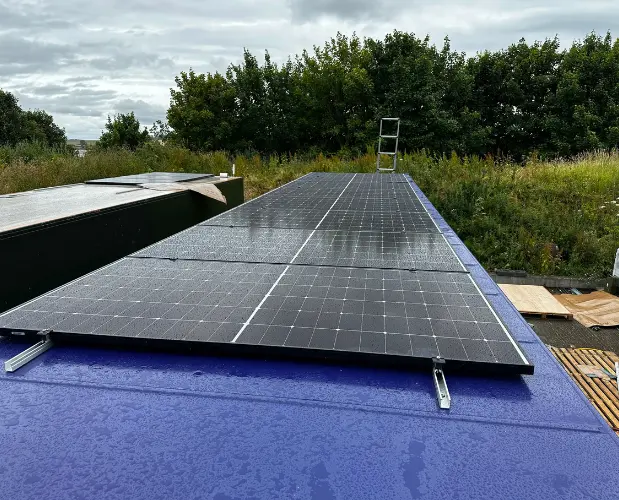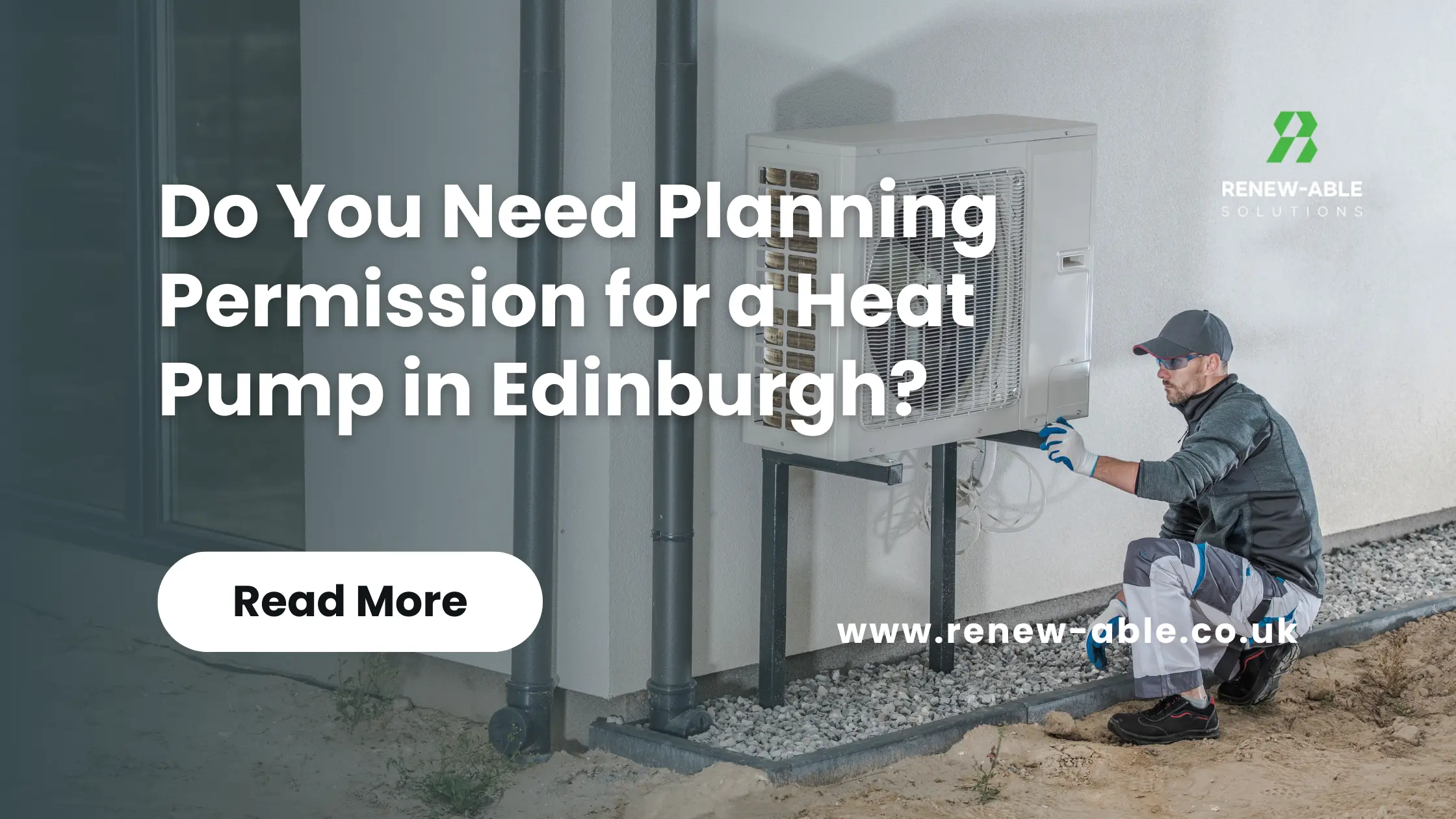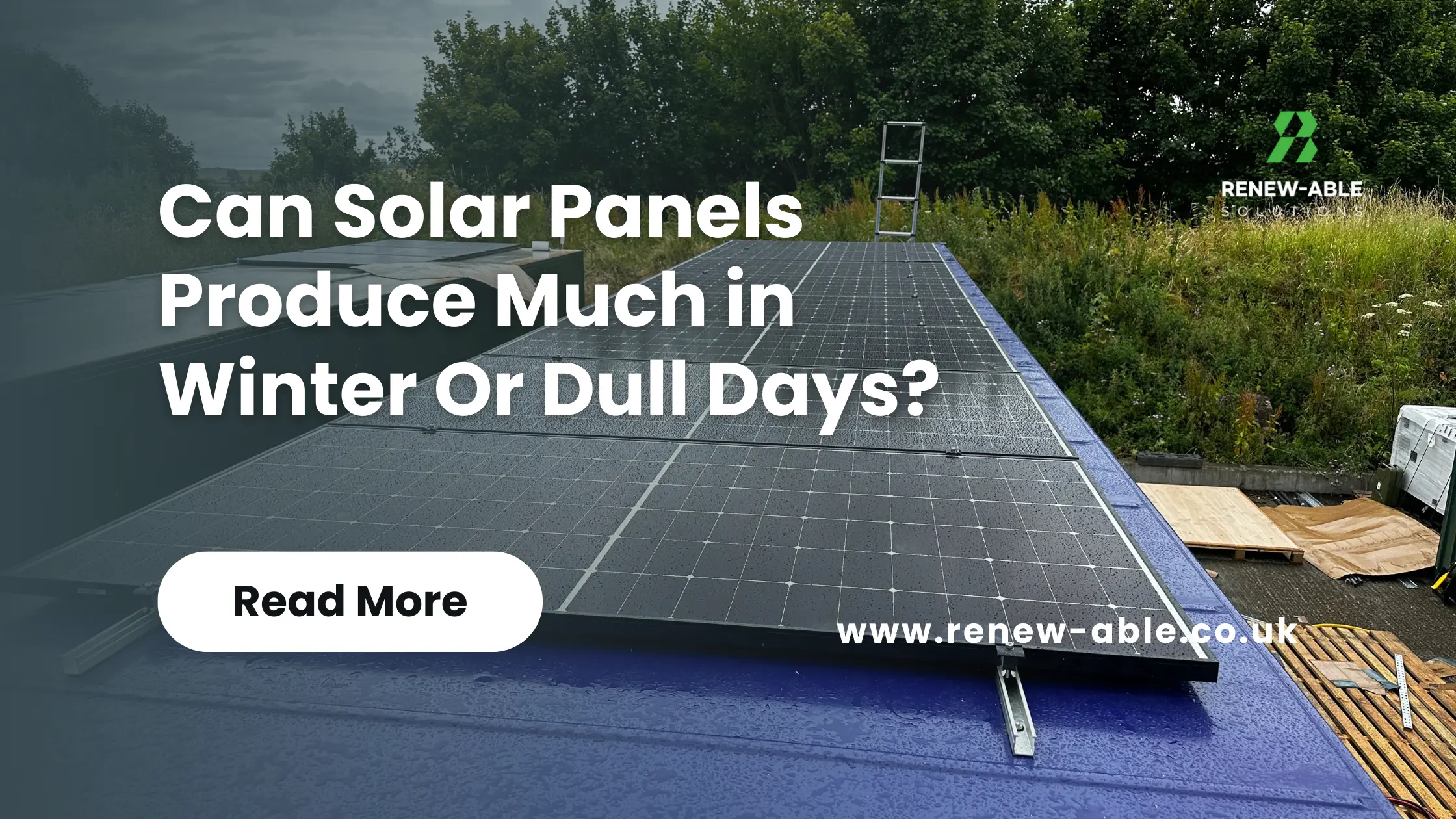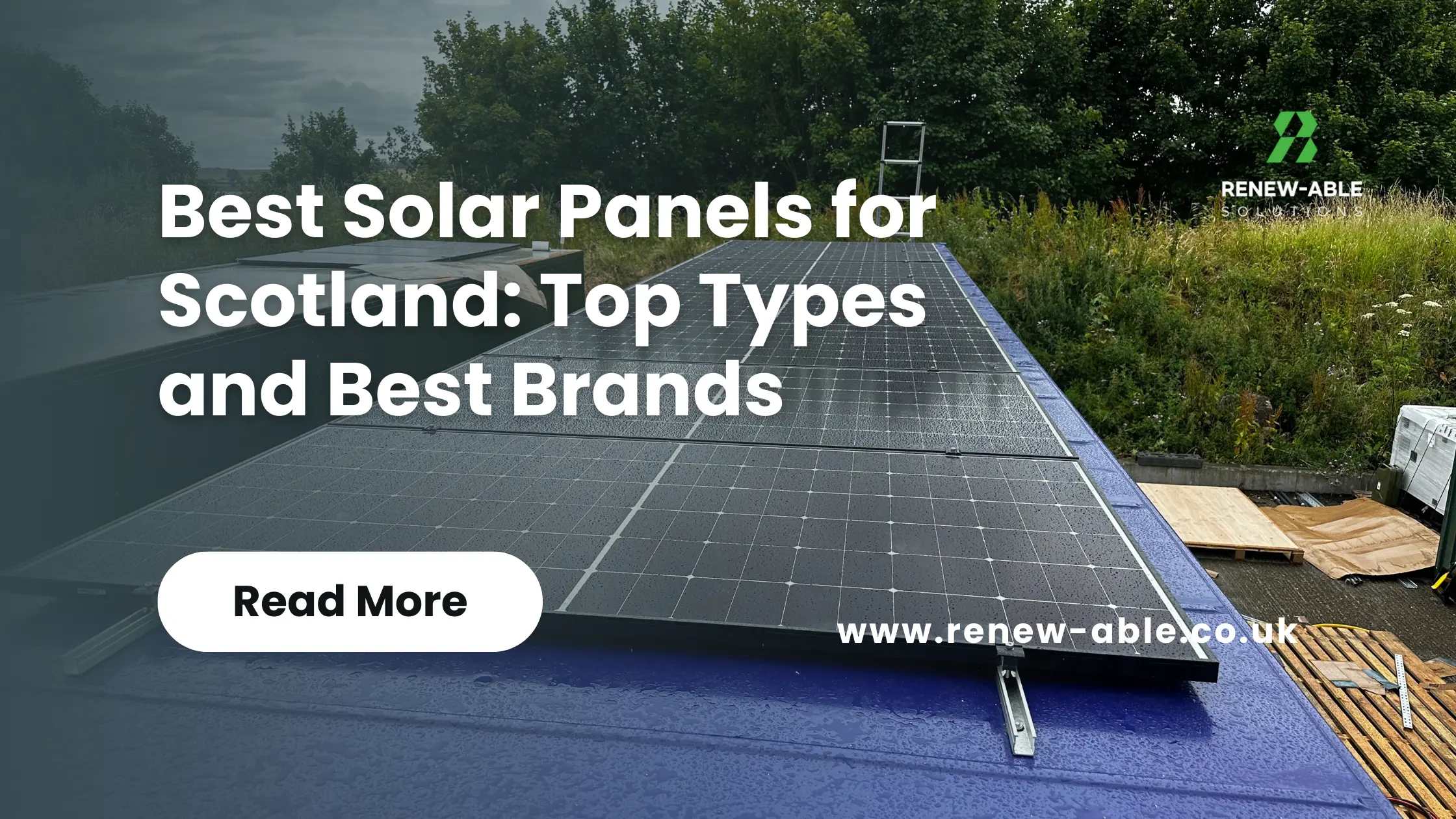Our Partners








20+
Years of Experience
Whats Our Story
Renew-Able Solutions are a Scottish based designer and installer of renewable energy solutions from PV panels, Batteries, Air & Ground Source Heat Pumps, Wind Turbines and more.
How We Work

Enquiry
We never cold sell so when you contact us we will always get back to you. Even in our busiest times.

Site Visit
We never cold sell so when you contact us we will always get back to you. Even in our busiest times.

Quote
We never cold sell so when you contact us we will always get back to you. Even in our busiest times.

Install
We never cold sell so when you contact us we will always get back to you. Even in our busiest times.
Our Services
Sustainable Solutions for a Greener Future
Solar PV
Renew-Able Solutions provides solar PV installation services in Scotland for home owners and companies looking for green energy solutions.
Battery Storage
Solar batteries are a new, evolving technology used alongside solar PVs. Let us install a battery that can help you use the solar produced energy.
Heat Pumps
Air & Ground source heat pumps are our speciality. Using green energy to heat your home. Contact us today for a heat pump installation quote.
EV Chargers
With the world adopting a lower emissions in vehicles we can install EV Charging point at your home or place of work. Contact us for your bespoke quote.
Wind Turbines
The UK is among the windiest in Europe and you may be able to have a wind turbine installed to capture green energy. Contact us to get a bespoke quote.
Commercial
Our solar panel installation company serves all businesses and industrial enterprises no matter how large or small. So, let us help you today!
23+
Our Happy Employees
44+
Our Suppliers
198+
Thousand tonnes of CO2 saved
2+
Million KW/h of Solar produced
Get a Free Consultation
for installing green
Renewable Engery
Why Choose Us
Our Promise
Customer satisfaction and top-tier service are at the heart of everything we do.
Expert Team
With over 20 years of experience, our certified professionals ensure reliable installations.
Quality First
We use only the best products, prioritizing performance and longevity over cost-cutting.
Proven Results
With 800+ solar installations and 175+ heat pumps, our track record speaks for itself.
Sustainable Future
Our solutions help reduce carbon footprints and promote green energy adoption.
Trusted Choice
We are a reputable provider known for reliability, transparency, and excellence.
What Our Customer Say About Us
EXCELLENTTrustindex verifies that the original source of the review is Google. Alan and the team installed and connected our ground mounted PV system and battery. Having the house run off solar is very satisfying and I would recommend it to anyone, as well as Renew-Able Solutions for the instal. Alan's support post installation has been much appreciated as wellPosted onTrustindex verifies that the original source of the review is Google. Alan and the team did a great job advising and installing the best suited battery and ev charger for us. We are now reaping the benefits of cheap, clean energy. He was on hand to help with any issues with configuring our GivEnergy Battery and Zappi charger making them work optimally with my energy provider. Very responsive. I would thoroughly recommend Renew-AblePosted onTrustindex verifies that the original source of the review is Google. We were looking for batteries to complement our pv panels since on sunny days we never used all the electricity generated. We are also on off peak for charging our car. Alan was superb. He explained it all clearly, answered all questions knowledgeably and was very comfortable to deal with. The job was done on time, with no fuss and, very importantly, we felt very comfortable having them in the house. Delighted at the battery performance. It not only worked to store solar but we could choose to charge on very low overnight rates to use in daytime. Our electricity bill literally halved from March (pre install) to April (2023). Professional, courteous and very skilled. Subsequently we decided to augment the system with a second battery and again they were flawless in advice, integrating it into the system and commissioning. Now almost two years on from initial installation it is all still working perfectly. What more could you want?Posted onTrustindex verifies that the original source of the review is Google. Fantastic! From my initial consultation on EV changer installation to the finished job everything was seamless! The cable is fully hidden and super neat! I am so happy! I cannot recommend Alan & his team enough!!!!Posted onTrustindex verifies that the original source of the review is Google. Alan and his team were fantastic - spent lots of time helping me to understand the different options for my solar and battery setup, and performed a great installation. Would highly recommend.Posted onTrustindex verifies that the original source of the review is Google. Professional service with excellent advice. RecommendedVerified by TrustindexTrustindex verified badge is the Universal Symbol of Trust. Only the greatest companies can get the verified badge who has a review score above 4.5, based on customer reviews over the past 12 months. Read more
Our Working Expertise
Frequently Asked Questions
A domestic, or home wind turbine, is a device that can turn wind energy into clean electricity for your home. It’s like a miniature version of the much bigger wind turbines you’ve likely seen around the UK, in fields, or just off the coast. The basic science is the same, but home wind turbines are more compact.
Can I have a Wind Turbine installed at my property? This is something we can only answer once a site visit has been completed.
This is not a straightforward question as will depend on a number of factors such as – Single Phase or 3 Phase – Single Phase is capable of over 7Kw/h and 3 phase is capable of 22kw/h but not all cars charge at the same rate on AC! Most cars have an inbuilt inverter that limits them to 11kw/h and most domestic supplies are only single phase. Some chargers also allow you to limit the charge to how much excess solar you are producing (Assuming you have solar!)
In a word – No. Not all EV chargers are the same and you need to know what kind of plug your car has or will come with. Currently in the UK there are 2 different types and these are either – Type 2 Charger – The IEC 62196 Type 2 connector (often referred to as mennekes in reference to the company that originated the design) is used for charging electric cars, mainly within Europe. This is the most commonly used charger plug in the UK. Chademo – CHAdeMO is the trade name of a fast-charging system for battery electric vehicles, developed starting in 2010 by the CHAdeMO Association, formed by the Tokyo Electric Power Company and five major Japanese automakers.[1] The name is an abbreviation of “CHArge de MOve” (which the organization translates as “charge for moving”) and is derived from the Japanese phrase “o CHA deMO ikaga desuka” (おちゃでもいかがですか), translating to English as “How about a cup of tea?”, referring to the time it would take to charge a car.[1]
Renew-Able Solutions want to make any installation as easy as possible and as part of this we will apply for either G98, G99 or G100 to the DNO and any work will not be able to start until this has been completed and accepted by the DNO. Scottish Power is the DNO in Scotland and you can read a little more about the differences in each application and what they mean.
Each and every install is different and no definitive amount of time can be given due to a number of factors such as but not limited to – Size of Solar Array Ease of Access Unforeseen issues that would’ve been impossible to have been known prior to install










